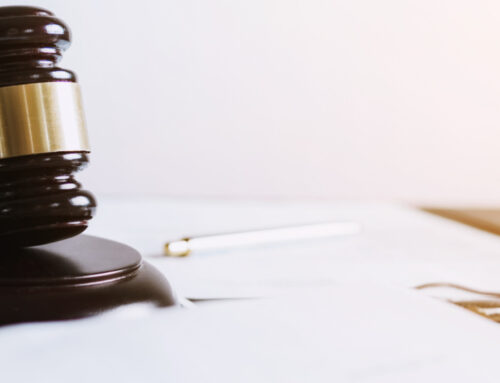Facing criminal charges in Maryland can be a daunting experience. Understanding the legal process and what to expect during a criminal trial can help alleviate some of the stress and anxiety that comes with being a defendant. This article offers a step-by-step guide for defendants to better understand the criminal trial process in Maryland.
Step 1: Arrest and Initial Appearance
The criminal trial process begins with an arrest. After the arrest, the defendant is brought before a judicial officer for an initial appearance, during which the charges against the defendant will be read. At this stage, the judicial officer will also determine whether there is probable cause to hold the defendant, set bail, and advise the defendant of their right to counsel.
Step 2: Appointment of Counsel and Entry of Plea
If the defendant cannot afford an attorney, they may request a public defender to represent them. Once the defendant has legal representation, they will be arraigned, during which they will enter a plea of guilty, not guilty, or, in some cases, nolo contendere (no contest). Most defendants plead not guilty, which leads to the scheduling of a trial.
Step 3: Discovery and Pretrial Motions
Before the trial begins, both the prosecution and defense engage in discovery, the process of exchanging evidence and information related to the case. The defense may also file pretrial motions, such as motions to suppress evidence or dismiss charges. A judge will consider these motions and make rulings before the trial commences.
Step 4: Jury Selection
In Maryland, both misdemeanor and felony cases can be tried by a jury. The process of jury selection, known as voir dire, involves the questioning of potential jurors by the judge, prosecution, and defense to determine their suitability for serving on the jury. Both sides have the right to exclude jurors for cause, such as bias, and a limited number of peremptory challenges, which allow them to exclude jurors without providing a reason.
Step 5: Opening Statements
Once the jury is selected, the trial begins with opening statements from both the prosecution and defense. These statements provide an overview of the case and outline the evidence that each side intends to present.
Step 6: Presentation of Evidence
The prosecution presents its case first by calling witnesses and presenting evidence. The defense has the opportunity to cross-examine each witness. After the prosecution rests its case, the defense may present its own evidence and witnesses, who are also subject to cross-examination by the prosecution.
Step 7: Closing Arguments
Once all evidence has been presented, both the prosecution and defense will deliver their closing arguments. In these arguments, each side will summarize the evidence and make a final appeal to the jury as to why they should find the defendant guilty or not guilty. The prosecution has the burden of proof and must convince the jury that the defendant is guilty beyond a reasonable doubt.
Step 8: Jury Deliberation and Verdict
After closing arguments, the jury will be given instructions by the judge and then begin their deliberations. The jurors will discuss the evidence and weigh the arguments presented by both sides to reach a unanimous decision on the defendant’s guilt or innocence. If the jury is unable to reach a unanimous decision, the judge may declare a mistrial, and the case may be tried again with a new jury. If the jury reaches a verdict, the judge will announce it in court. If the defendant is found not guilty, they will be released, and the charges will be dismissed. If the defendant is found guilty, the case will proceed to the sentencing phase, during which the judge will determine the appropriate punishment based on the nature of the crime, the defendant’s criminal history, and other relevant factors.
If you or a loved one are facing criminal charges in Maryland, it is crucial to have a knowledgeable and experienced legal team on your side. The Law Offices of McKenzie and Tehrani are committed to providing aggressive and effective representation to help protect your rights and ensure the best possible outcome for your case.
Qué Esperar en un Juicio Penal en Maryland: Una Guía Paso a Paso Para Los Acusados
Aceptar cargos criminales en Maryland puede ser una experiencia desalentadora. Comprender el proceso legal y qué esperar durante un juicio penal puede ayudar a aliviar parte del estrés y la ansiedad que conlleva ser un acusado. Este artículo ofrece una guía paso a paso para que los acusados comprendan mejor el proceso de juicio penal en Maryland.
Paso 1: Arresto y comparecencia inicial
El proceso de juicio penal comienza con un arresto. Después del arresto, el acusado es llevado ante un oficial judicial para una comparecencia inicial, durante la cual se leerán los cargos contra el acusado. En esta etapa, el oficial judicial también determinará si existe causa probable para detener al acusado, establecer una fianza y asesorar al acusado sobre su derecho a un abogado.
Paso 2: Designación de abogado y declaración de culpabilidad
If the defendant cannot afford an attorney, they may request a public defender to represent them. Once the defendant has legal representation, they will be arraigned, during which they will enter a plea of guilty, not guilty, or, in some cases, nolo contendere (no contest). Most defendants plead not guilty, which leads to the scheduling of a trial.
Paso 3: Mociones de descubrimiento y previas al juicio
Antes de que comience el juicio, tanto la acusación como la defensa participan en el descubrimiento, el proceso de intercambio de pruebas e información relacionada con el caso. La defensa también puede presentar mociones previas al juicio, como mociones para suprimir pruebas o desestimar cargos. Un juez considerará estas mociones y tomará decisiones antes de que comience el juicio.
Paso 4: Selección del jurado
En Maryland, tanto los casos de delitos menores como los de delitos mayores pueden ser juzgados por un jurado. El proceso de selección del jurado, conocido como voir dire, implica el interrogatorio de los posibles jurados por parte del juez, la fiscalía y la defensa para determinar su idoneidad para formar parte del jurado. Ambas partes tienen el derecho de excluir a los miembros del jurado por causa, como la parcialidad, y un número limitado de impugnaciones perentorias, que les permiten excluir a los miembros del jurado sin proporcionar una razón.
Paso 5: Declaraciones de apertura
Una vez que se selecciona el jurado, el juicio comienza con declaraciones de apertura tanto de la acusación como de la defensa. Estas declaraciones brindan una descripción general del caso y describen las pruebas que cada parte tiene la intención de presentar.
Paso 6: Presentación de Evidencia
La fiscalía presenta su caso primero llamando a testigos y presentando pruebas. La defensa tiene la oportunidad de contrainterrogar a cada testigo. Después de que la fiscalía descanse en su caso, la defensa puede presentar su propia evidencia y testigos, quienes también están sujetos a contrainterrogatorio por parte de la fiscalía.
Paso 7: Argumentos finales
Una vez que se hayan presentado todas las pruebas, tanto la acusación como la defensa presentarán sus alegatos finales. En estos argumentos, cada parte resumirá la evidencia y hará una apelación final al jurado sobre por qué debería encontrar al acusado culpable o no culpable. La acusación tiene la carga de la prueba y debe convencer al jurado de que el acusado es culpable más allá de toda duda razonable.
Paso 8: Deliberación del jurado y veredicto
Después de los argumentos finales, el juez dará instrucciones al jurado y luego comenzará sus deliberaciones. Los jurados discutirán las pruebas y sopesarán los argumentos presentados por ambas partes para llegar a una decisión unánime sobre la culpabilidad o inocencia del acusado. Si el jurado no puede llegar a una decisión unánime, el juez puede declarar un juicio nulo y el caso puede ser juzgado nuevamente con un nuevo jurado. Si el jurado llega a un veredicto, el juez lo anunciará en el tribunal. Si el acusado es declarado no culpable, será puesto en libertad y los cargos serán desestimados. Si el acusado es declarado culpable, el caso pasará a la fase de sentencia, durante la cual el juez determinará el castigo apropiado según la naturaleza del delito, los antecedentes penales del acusado y otros factores relevantes.
Si usted o un ser querido enfrentan cargos penales en Maryland, es fundamental contar con un equipo legal experto y experimentado de su lado. Contactenos Hoy. Las Oficinas Legales de McKenzie y Tehrani se comprometen a brindar una representación agresiva y efectiva para ayudar a proteger sus derechos y garantizar el mejor resultado posible para su caso.





